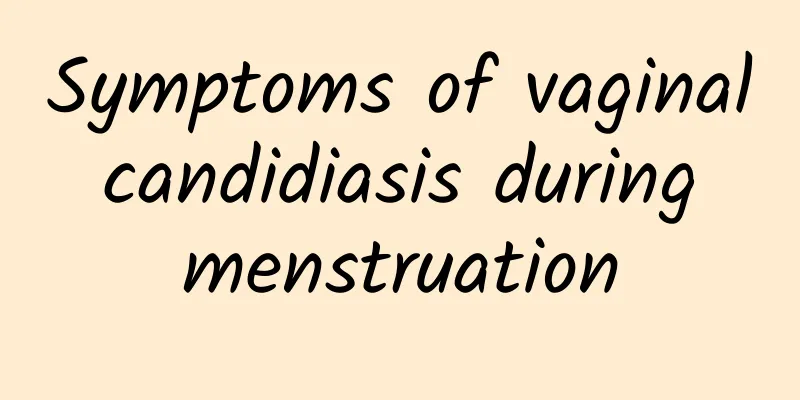Get rid of fatty liver by doing this! 4 seated yoga stretches to help improve

|
Is your liver getting fat? According to a survey, 1 in every 2 to 3 Chinese people suffers from fatty liver disease. If not properly controlled and treated, it may develop into hepatitis, cirrhosis, or even liver cancer, posing a serious threat to health! What should you do if you want to get rid of the threat of fatty liver? Experts say that in addition to working hard on your diet, moderate exercise such as yoga and moderate muscle stretching are also good health care options! Is yoga stretching good for liver health? The latest research says this~ What are the benefits of yoga for the liver? In their co-authored book "Eliminate Fatty Liver in 28 Days," Kristin Kirkpatrick, a well-known American nutritionist, and Ibrahim Hanouneh, a gastroenterologist and hepatobiliary specialist, mentioned that among many sports, moderate yoga stretching can not only help improve body flexibility, but also benefit the liver. According to a study published in the European Scientific Journal in 2014, developing a habit of yoga can reduce the concentration of alkaline phosphatase (ALP) in the subjects' blood and reduce their weight. The subjects of the study were adults aged 20 to 50, and the above results were achieved after they completed a one-and-a-half-month yoga course. In addition, in 2015, an Indian study found that if alcoholics performed 90 minutes of high-intensity yoga mind-body training every day for 30 consecutive days, the concentrations of alanine transaminase (ALT) and alkaline phosphatase in their blood could be significantly reduced. (Note: Alkaline phosphatase and aminase are both indicators of liver function index.) Protect your liver by doing these 4 yoga stretching exercises that are very effective Since moderate yoga training has so many benefits for liver health, how should it be performed and which movements are particularly suitable? Nutritionist Christine Colpatrick and gastroenterologist Ipsin Hannona recommend the following four yoga poses that can moderately twist and stretch the abdominal muscles and are recognized by yoga experts as being particularly beneficial to liver health. They are provided to the public as a reference for daily health care: [Step 1 / Sitting Pyramid Pose] 1. Sit on the front edge of the chair with your head up and chest out, your feet flat on the ground, your knees bent at 90 degrees, and your toes and knees facing forward. 2. Then open your legs to the sides in a large V shape, keeping your knees bent at 90 degrees (ankles should be directly below the knees), and your toes and knees in the same direction. 3. Place your hands on your thighs and take a deep breath. When you inhale, let the air fill your chest and abdomen, stretch your head toward the ceiling, and straighten your spine. 4. Then exhale. While exhaling, contract your stomach toward your spine and let your body slowly lean forward with your hips as the base. 5. At this time, the spine, neck and head should be kept in the same straight line. Maintain this posture for 1 to 2 breaths (the length of time can also be adjusted according to personal situation). 6. Return to the initial sitting position with your head and chest out, and repeat the whole set of movements 2 to 3 times. [Move 2 / Seated Twist Pose] 1. Sit on the front edge of the chair with your head up and chest out, your feet flat on the ground, your knees bent at 90 degrees, and your toes and knees facing forward. 2. Place your hands on your thighs and take a deep breath. When you inhale, let the air fill your chest and abdomen, stretch your head toward the ceiling, and straighten your spine. 3. Then exhale; while exhaling, contract your stomach towards your spine, let your right hand lightly touch the back of the chair, and place your left hand on your right thigh. Finally, gently twist your upper body to the right. 4. At this time, your shoulders should be in a naturally relaxed state rather than shrugging. Maintain this posture for 1 to 2 breaths (the length of time can also be adjusted according to personal situation), and then return to the initial sitting posture. 5. Then take a few deep breaths, and then take another deep breath, letting the air fill your chest and abdomen as you inhale, and stretch your head toward the ceiling to straighten your spine. 6. Then, exhale, switch sides and repeat. [Move 3 / Seated Half Twist] 1. Sit on the right side of the chair with your head up and chest out, your feet flat on the ground, your knees bent at 90 degrees, and your toes and knees facing forward. 2. Place your hands on your thighs and take a deep breath. When you inhale, let the air fill your chest and abdomen, stretch your head toward the ceiling, and straighten your spine. 3. Then exhale. While exhaling, contract your stomach towards your spine. Place your hands on the top of the chair back. Finally, gently turn your upper body to the right. 4. At this time, your back should be straightened and your shoulders should be in a natural relaxed state instead of shrugging. Maintain this posture for 1 to 2 breaths (the length of time can be adjusted according to personal situation), and then return to the starting posture. 5. Take a few deep breaths first and check whether you are keeping your head up and your chest out. 6. Now please sit on the left side of the chair, and when exhaling, contract your stomach towards the spine, place your hands on the top of the chair back, and then change side and repeat the operation. [Step 4 / Sitting Baby Pose] 1. Sit on the front edge of a chair with your head up and chest out, your feet flat on the ground, your knees bent at 90 degrees, and your toes and knees facing forward. 2. Place your hands on your thighs and take a deep breath. When you inhale, let the air fill your chest and abdomen, stretch your head toward the ceiling, and straighten your spine. 3. Then exhale. As you exhale, contract your stomach toward your spine and let your body slowly curl up toward your thighs. 4. Place your hands or forearms on your thighs to support the weight of your upper body, keep your spine flexible, and relax your chest. 5. At this point, your head and neck should be relaxed, with your chin pointing to your chest. Maintain this position for 1 to 2 breaths, and then return to the initial sitting position with your head up and chest out. Repeat the same set of movements 2 to 3 times. 【Tips】: In addition to engaging in moderate yoga training to help improve liver function, it is recommended that patients with fatty liver problems should still actively seek medical treatment, seek the assistance of a doctor, and prescribe the right medicine. At the same time, following the doctor's instructions to return for regular checkups and test the liver's condition is the only way to effectively prevent symptoms from worsening. |
<<: Drinking coffee before exercise can help you lose weight! The key is: what kind of exercise?
Recommend
Can I eat potatoes after a miscarriage? Yes
Abortion is very harmful to female friends' b...
Does female cervical erosion affect pregnancy? How to treat female cervical erosion?
Once cervical erosion is detected during pregnanc...
What causes adnexitis?
Adnexitis refers to inflammation of the fallopian...
Experts remind women to understand the causes of dysmenorrhea
"What are the causes of dysmenorrhea?" ...
Diet therapy for congenital absence of vagina
Congenital absence of vagina refers to the obstru...
The night is full of partying during the holidays, and nutritionists will teach you how to eat as much as you want without gaining weight!
There is always a carnival atmosphere at the end ...
Conspiracy theory of surrounding pigs to save American cows? Chen Baoji: Impossible
Just as Taiwan was in the midst of an uproar over...
There are several common treatments for uterine fibroids:
Many people want to know the methods of treating ...
What are the symptoms of habitual miscarriage? Pay special attention to these 4 symptoms
Nowadays, women are under great pressure in life....
Is it better to have your period earlier after an abortion? What should you pay attention to after an abortion?
In our lives, abortion is a very common thing. Ma...
What are the causes of irregular menstruation in girls? What are the hazards of irregular menstruation in girls?
Nowadays, many little girls, although young, have...
What are the harmful effects of abortion? There are 4 major harms
The abortion rate is very high now, but most peop...
Postpartum adhesions at the internal cervical os
Postpartum adhesions at the internal cervical os ...
Help you understand some treatment methods for vulvar leukoplakia
Vulvar white lesions are also called vulvar white...
What are the dietary treatments for cervical erosion? 3 foods that are suitable for cervical erosion and 3 taboo foods
Patients with cervical erosion should eat more nu...









